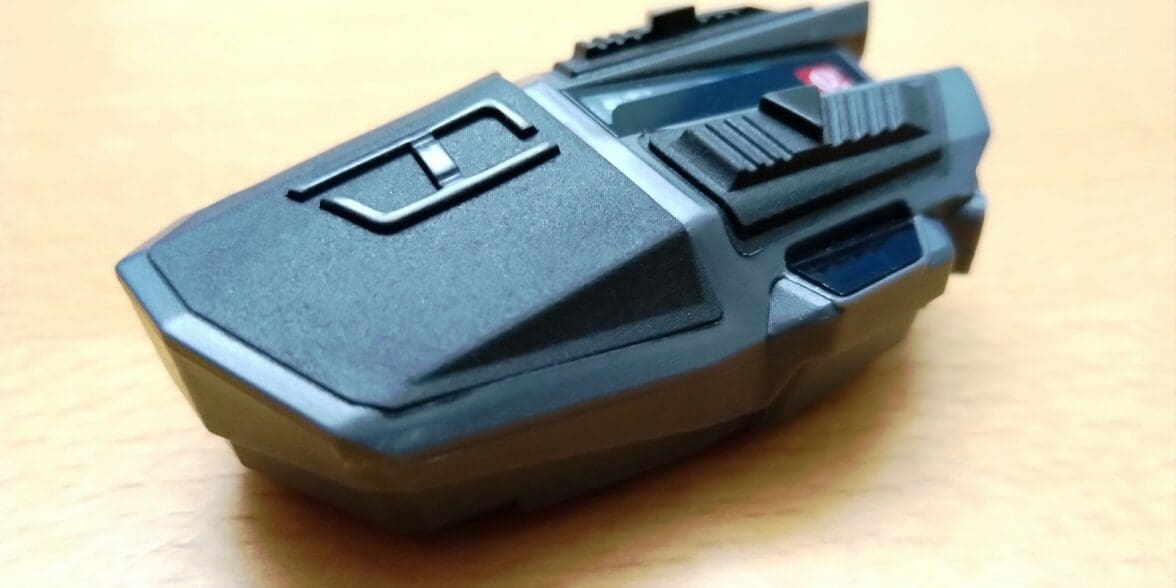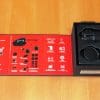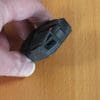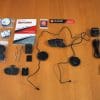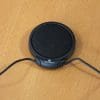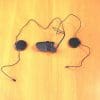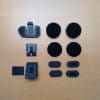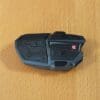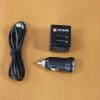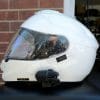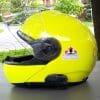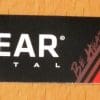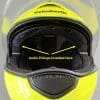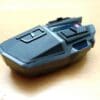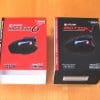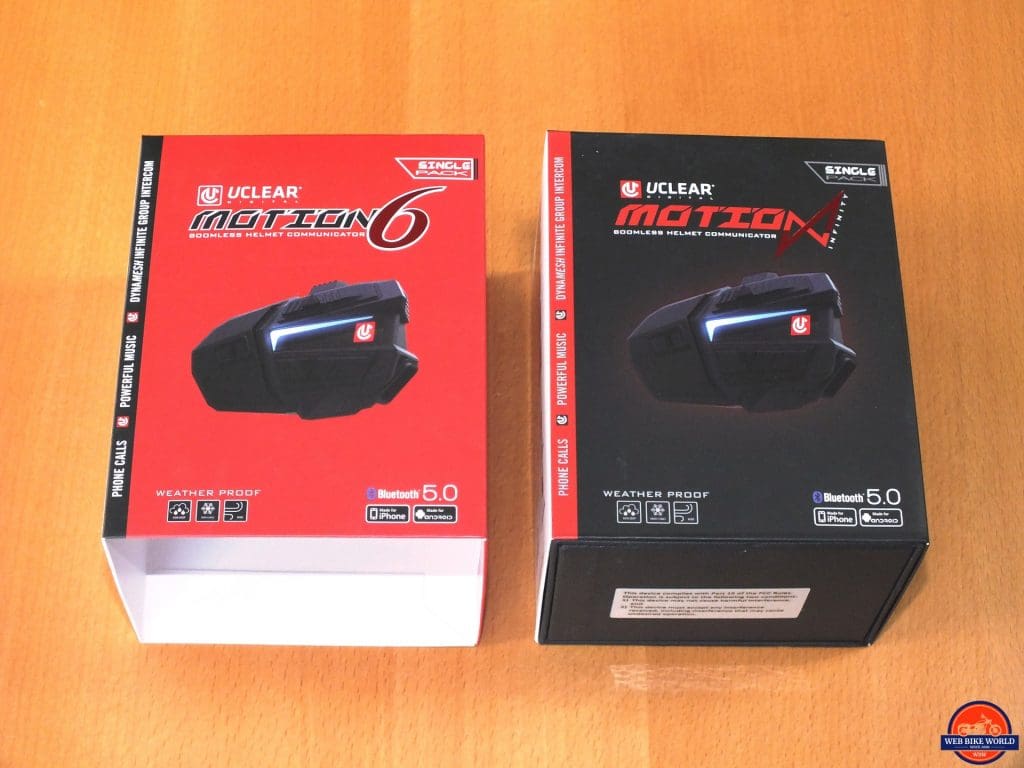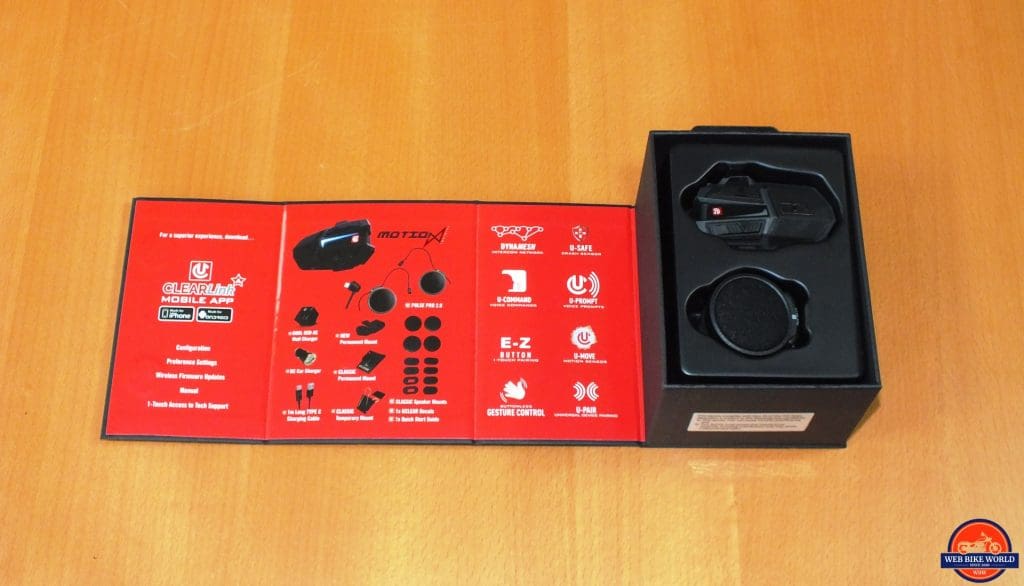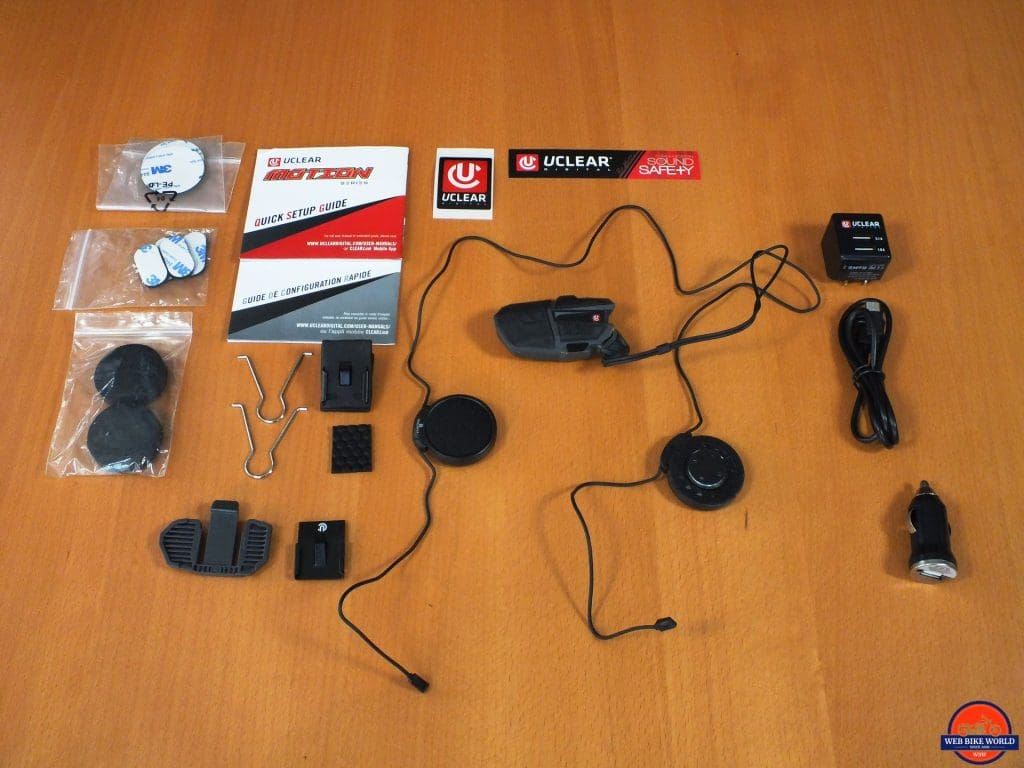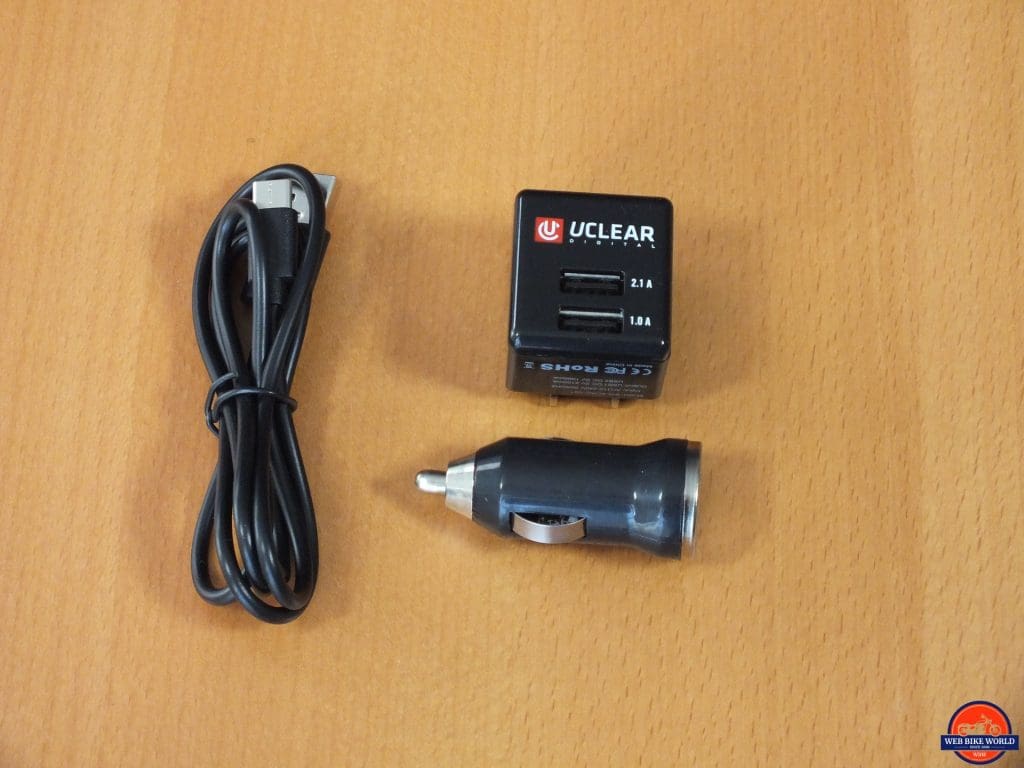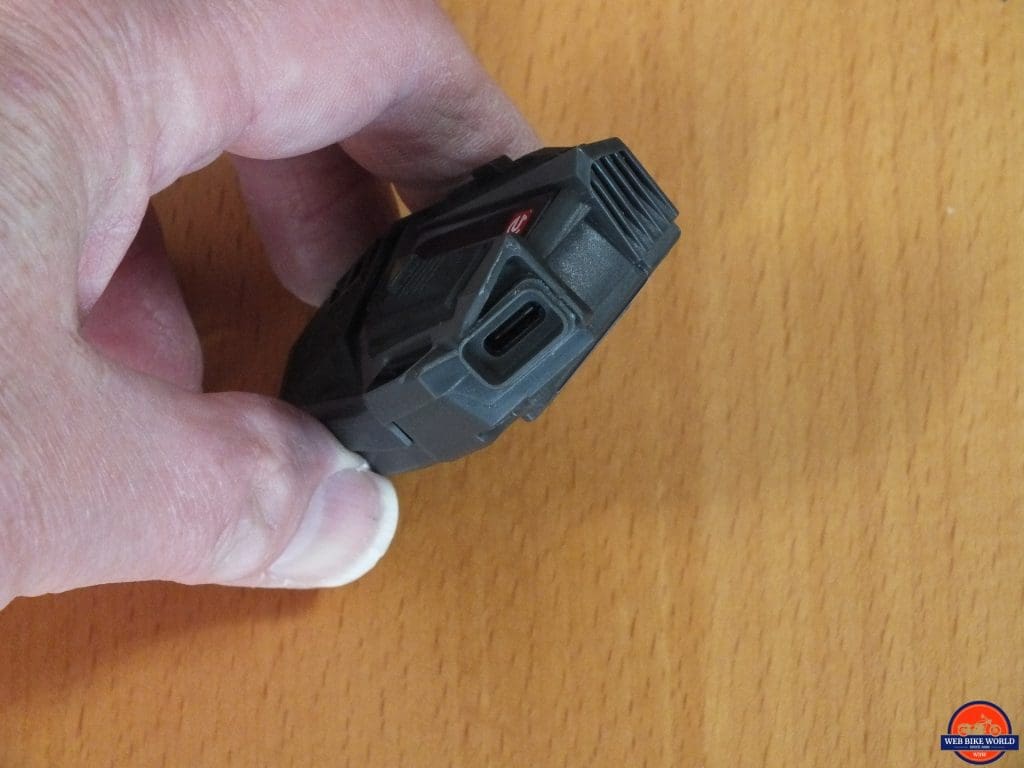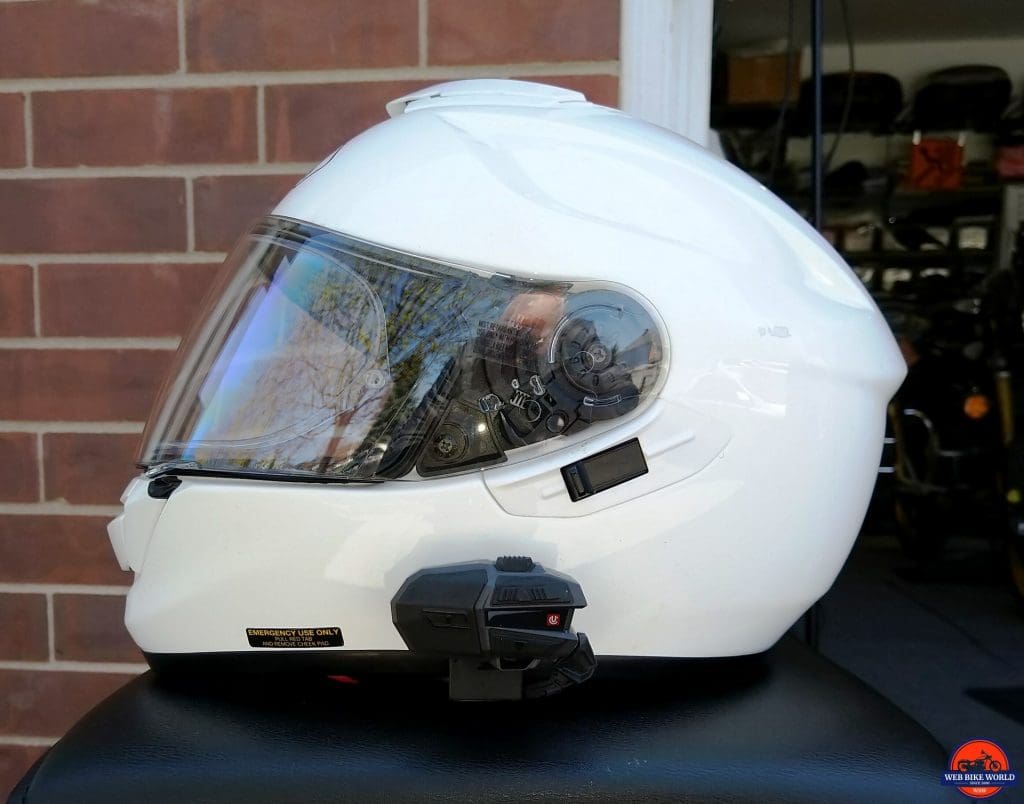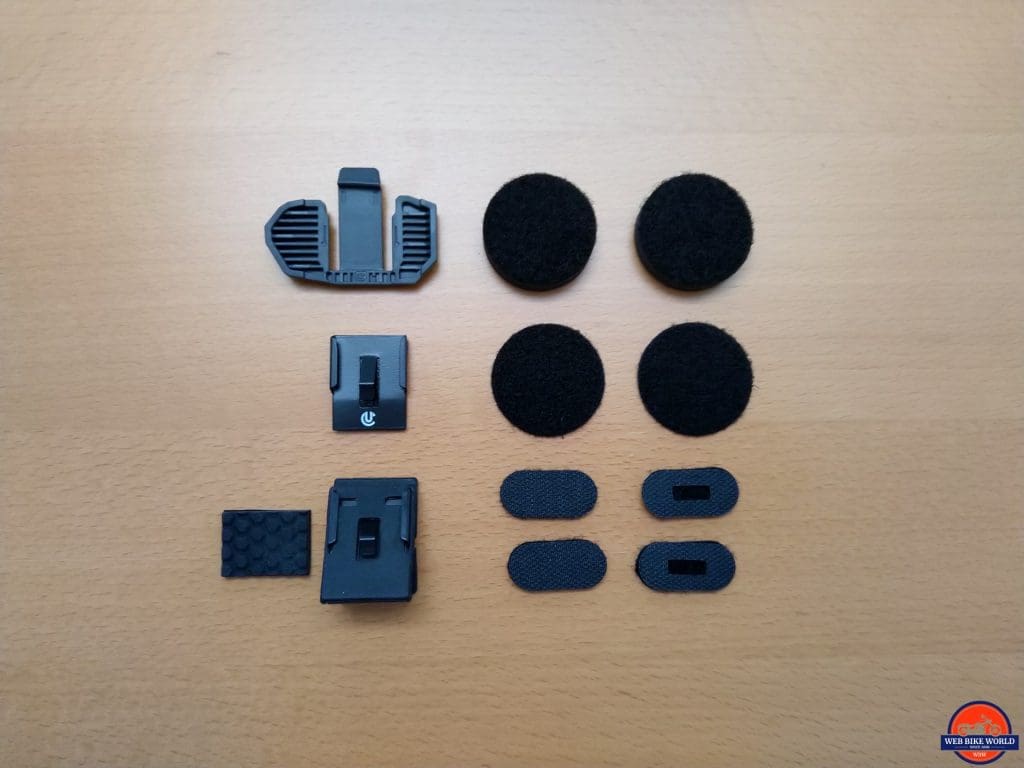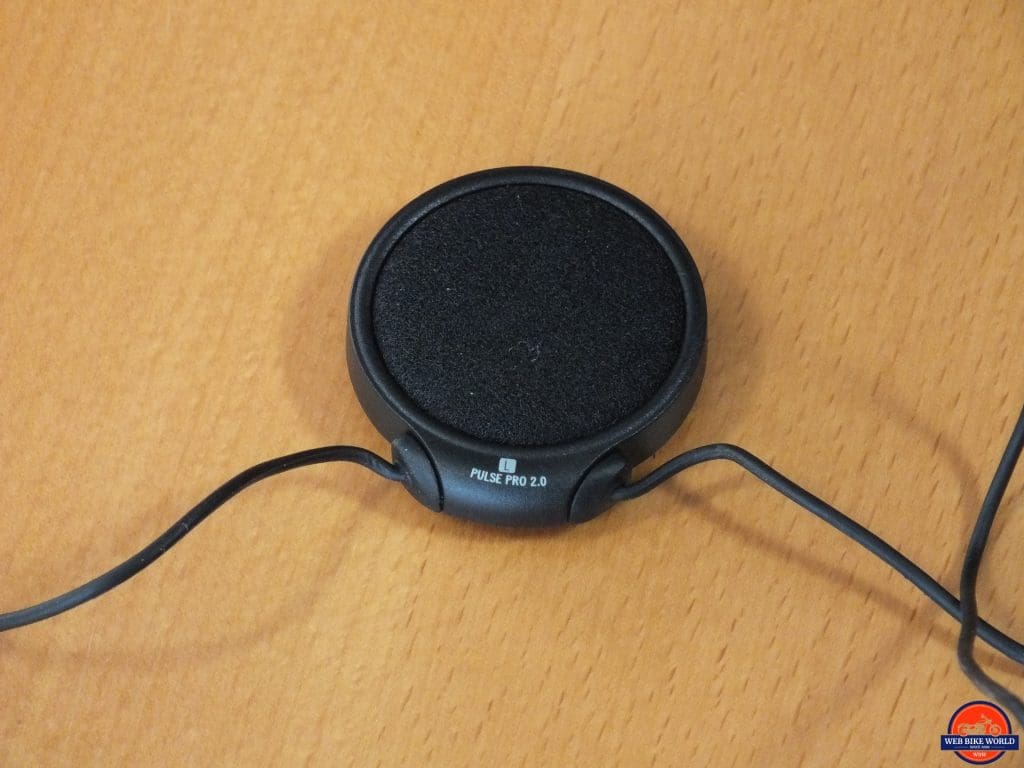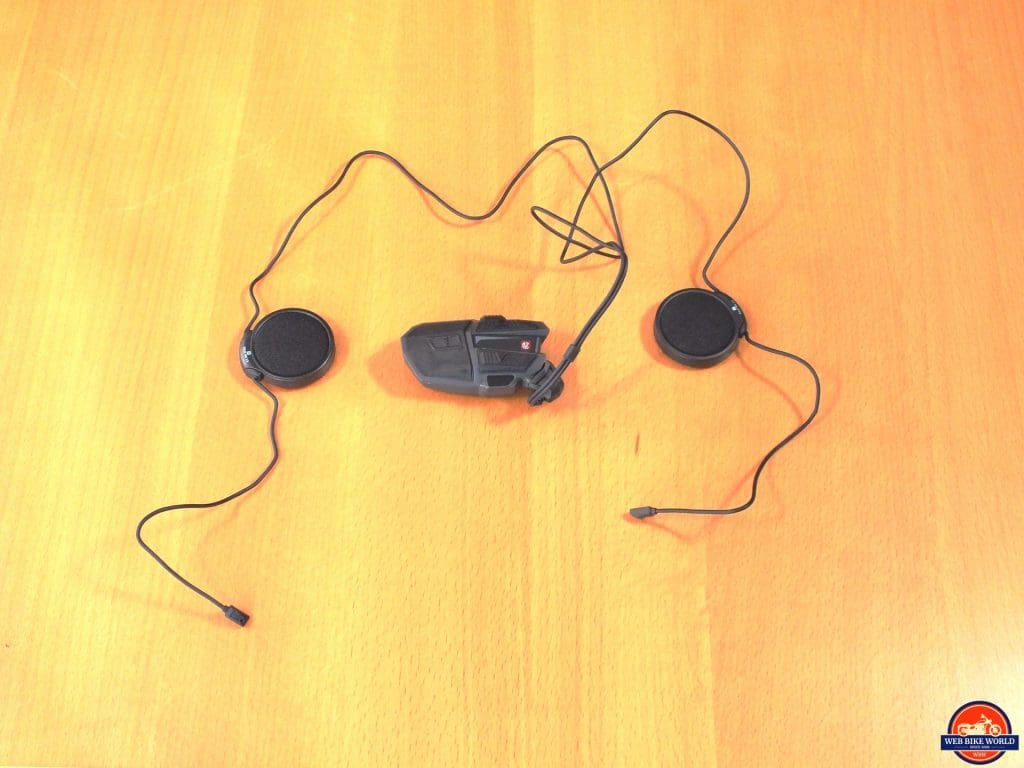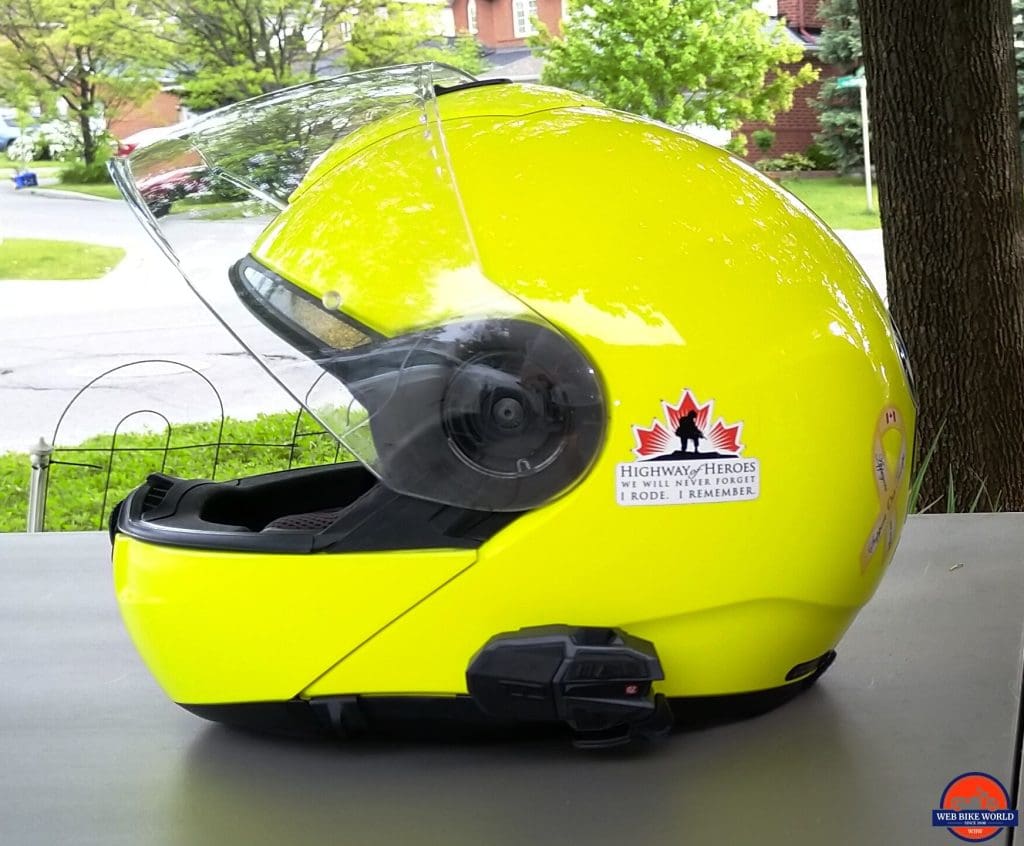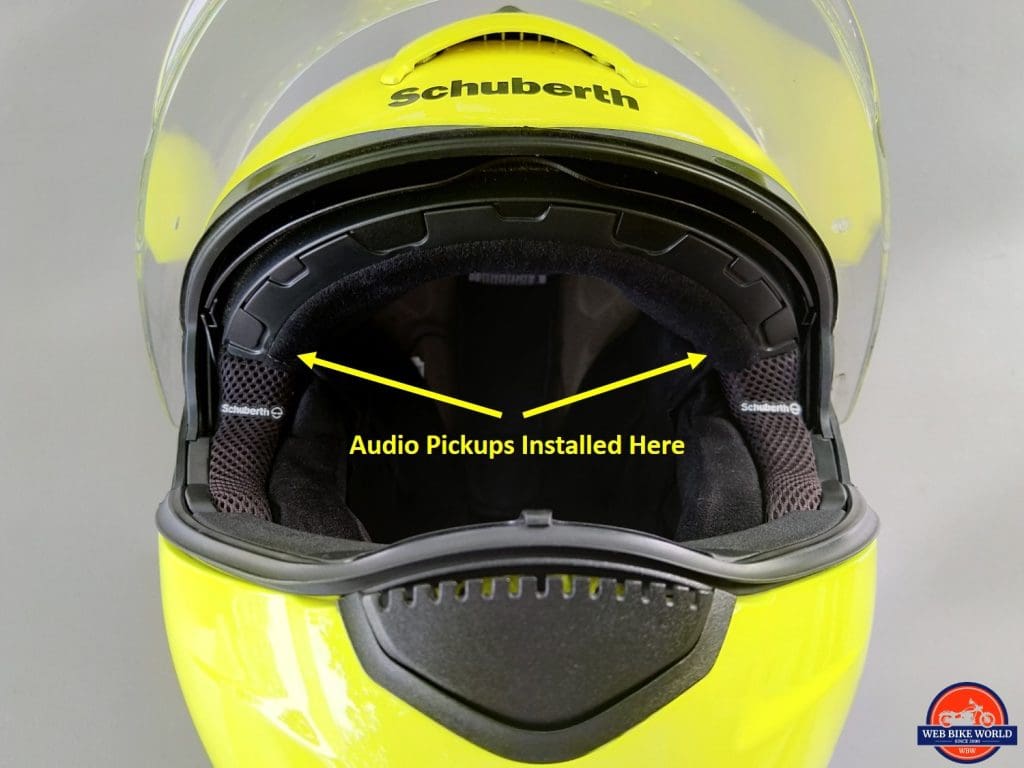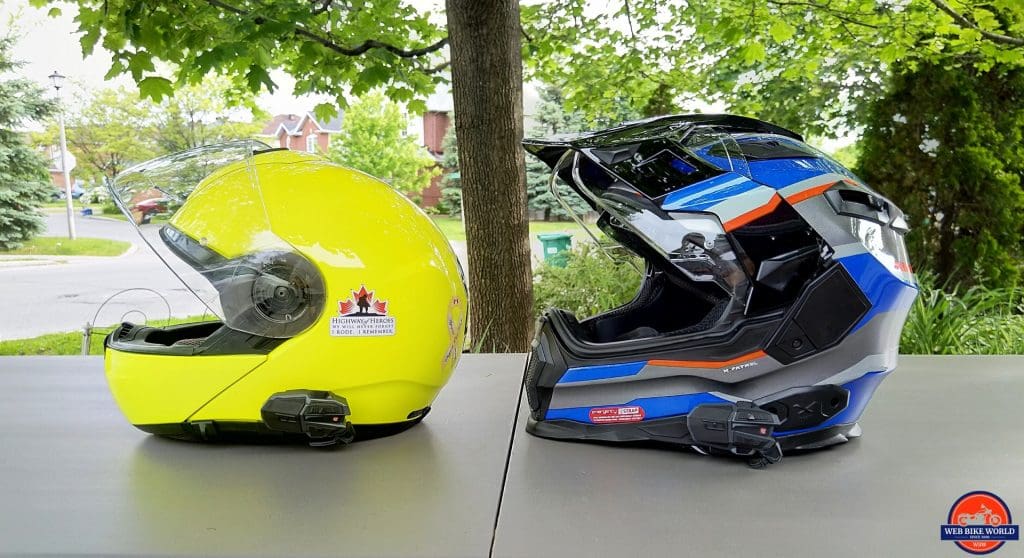Foreword
This first of two Motion Series reviews introduces the new Motion Series systems from UClear and focuses on the Motion 6 system that is the base offering of this new series of products.
The more advanced Motion Infinity is the subject of the second review in this series and while it shares almost everything with the basic Motion 6, the Infinity model is endowed with some game-changing features that deserve singular attention.
We hope you enjoy the UClear Motion Series coverage – the wBW team.
Introduction
The Motion Series comprising the Motion 6 and the Motion Infinity are the newest systems from UClear. True to form both feature boomless headsets, outstanding headset audio, and intercom performance along with a host of updated and new features.
One of these new features common to the Motion Series is the use of Bluetooth v5.0 (an industry first) while another game-changing feature, USAFE, is found only on the Motion Infinity. These are indeed premium offerings from UClear.
In adopting Bluetooth v5.0 (BT 5.0) UClear gains a significant advantage for the present and going forward even though other manufacturers are busy finalizing their own BT 5.0-based systems and some of them could be available this summer and wBW will be here to review them.
wBW has evaluated virtually everything marketed by UClear for motorcycle use such as the Amp Intercoms. If there is one constant it is intercom and audio excellence – whether voice-based like intercom and phone, or audio fidelity for music streaming.
Like all other UClear Bluetooth products, the Motion Series systems are installable on any type of helmet: Full-Face, Modular, Off-Road, Three-Quarter and Half Helmets (w/long earbuds). The boomless microphone approach still works and the new Pulse Pro 2.0 speakers and microphones headset offer even more fitment versatility and better performance than ever.
The new Motion Series products are a clear indicator of UClear’s continued commitment to power-sports users regarding communications, audio excellence and safety.
As you will see between the Motion Series reviews, the Motion 6 and Motion Infinity share much in common with only a couple of features specific to the slightly more advanced Infinity. Most of the common Motion Series features are covered in this Motion 6 review – on with the show.
Motion 6 – Overview
The Motion Series systems feature a new look that differs significantly from the somewhat egg-shaped modules used on the HBC and AMP models. Still small and lightweight, the Motion Series module is stylized with distinctly shaped and edgy sections hosting the tactile inputs.
From the face side, the large Power button dominates most of the left half, with Up and Down buttons found on upper and lower sections on the right half. The recessed space between these two controls houses the LED indicator and a small UClear logo.
The E-Z button, aka Quick Access, is a distinctive and tactile-friendly ribbed button on the top right half of the module. The lower right corner houses the single USB-C port, used for both the headset connector and the charging/data connection.
Sometimes a stylized approach works and sometimes it doesn’t; the UClear Motion Series modules are somewhere in between. There is (usually) a learning curve in finding and activating the inputs on any device and the Motion Series modules are no exception – with medium to heavy-weight gloves in use it is difficult. Thankfully there are other options.
And one of the other options is provided courtesy of the dark tint ‘window’ on the lower right half of the module that is the Gesture Sensor, another new UClear feature that, with some practice, eliminates most of the usual interactive button pushing.
Size and output of the module LED is another appreciated feature. Shaped like a stylized wing in low or bright light it can be seen readily. This might seem like a (small) issue, but if the helmet is off the head without access to the Voice Prompts (but visible) this very bright LED provides the visual interface for the user.
And in speaking of the large bright LED, when charging the unit with the provided AC-DC charging brick or a standard USB (trickle) charge via a computer, the LEDs go from Red (charging) to Blue (charged).
And with the USB-C interface, faster charging is possible.
The Motion 6 is identified as ‘weatherproof’, although no IP rating is provided. A heavy-duty USB Type-C connector provides the headset to module connection while a sturdy USB-A to USB-C cable provides data and charging connectivity
Standard on the Motion Series devices is the new Pulse Pro 2.0 speaker system featuring dual MEMS audio pickups (microphones) on lead extensions for optimum placement flexibility.
And as we almost missed this feature on the first pass, there is U-Move – that activates when the system is turned on. If the helmet or system isn’t accessed for two minutes, it shuts down while a quick tap or movement turns it back on again. More on this in the Motion Infinity submission.
Motion 6 – Helmet Installation
Like all the headsets UClear markets, the Motion Series systems fit on full-face, modular, off-road, three-quarter, and half helmets equally well, largely thanks to their light-weight small form factor and a unique speaker/audio pickups (microphone) approach.
Early versions including the HBC 100 and 200 series systems used digital audio pickups integrated into small front nubs on the left and right speaker housings – extremely effective and greatly simplifying installations in most helmets – no boom or thin wire microphone.
With the advent of the AMP series, an additional option became available – audio pickups separated from the speaker housings on extended leads allowed them to be placed almost anywhere in the helmet for optimal intercom performance even in extremely noisy helmet and cockpit environments.
The Motion 6 kit includes the new UClear Pulse Pro 2.0 headset that includes two somewhat larger thicker speakers measuring 4.0cm (1.57in) in circumference and ~1.0cm (0.40in) thick each with 20cm (7.87in) long thin wire leads ending in small audio pickups (microphones).
First Installation on a GT-Air
First to host the Motion 6 is a GT-Air owned by a fellow Beemer rider who was using a Sena 20S system. After unsnapping the essential interior parts to access speakers and removing the clamp mount the helmet is ready to receive the Motion 6 system. The installation didn’t take much longer than the removal of the 20S.
Larger and thicker than the removed speakers, the UClear Pro pieces still fit nicely into the recesses of the GT-Air so no special accommodation steps are needed. The speakers are oriented ‘upside-down’ if you will so the pickup extensions run almost directly forward to the front of the helmet between the helmet and cheek pieces.
This places the small audio pickup heads just clear of the join between the pads and the front chin piece. Small adhesive slotted ‘mounting rounds’ from the kit facilitate easy secure mounting of the small pickup heads – these appreciated pieces scream “attention to detail”.
As evenly placed but positioned well apart on the chin section facing the occupant, this ‘framing’ provides the ‘virtual’ microphone environment that is so effective for voice pick-up. Over the eyes (under the brow pad), or to the sides at the eye, or brow level is other good spots.
Balanced placement of the dual audio pickups is important for optimal performance with the UClear exclusive Advanced Beam Forming (ABF) array capability that contributes so positively to overall performance and is found, in one form or another, on all UClear systems.
With speakers and audio pickups run and everything else replaced there is about 7cm (3in) of headset lead exiting the left side of the helmet. One of the temporary U-shaped tensile steel clamp mounts and half a silicone cushion pad from the mounting kit form a secure but readily removed mount for the Motion 6 module.
Note – the Gesture Control sensor (detailed in a later section) located on the lower face of the module is most effective when mounted as flat (horizontally) as possible on the shell so that the beam aims out rather than down towards the collar or shoulder.
The installation is finished by making sure the small UClear logo on the headset connector is facing the user and then pushing said connector into the waiting USB-C port on the module.
This is only the first of several (now ongoing) helmet swaps for both Motion Series devices; the more helmets used, the better. This approach always pays dividends in the gathering of installation and use of information for near term reviews and long-term support to users.
U-PAIR – Pairing and Connectivity
U-Pair is a “unique” capability for pairing virtually anything Bluetooth – smartphones, smartwatches, tablets, GPS, Point of View cameras and OEM systems (like the BMW TFT Hub), and other brand helmet systems – more on this later.
Pushing the power button for two seconds brings the Motion 6 to life confirmed by a short visual acknowledgment from the LED and U-Prompt voice announcement in the headset – this feature provides basic system status and user input announcements. Once boot-up is done, the LED goes into standby indicated by a rhythmic Blue pulsing from the LED.
With a Nokia 7+ Android phone running BT 5 readied for pairing the first (official) U-Pair action is initiated by pressing the Up and Down buttons simultaneously on the Motion 6 until the standard Red/Blue LED output sequence is seen – all familiar territory so far.
The Motion 6 FW v1.02 is recognized by the phone in two seconds and after another two seconds, they are linked – with phone calls, media audio, and contact sharing (all selectable options) allowed between the two.
Before exploring more of the Motion 6 system features and capabilities, we need to bring the UClear CLEARLink app for iOS and Android into the configuration. The app isn’t needed to use the Motion Series or other UClear systems but is needed to exploit specific features through customization and of course for the Infinity USAFE feature.
UClear CLEARlink Mobile App
As noted by many (including yours truly) in the past, the downloadable app (iOS and Android) is well laid out although it appears sparse in comparison to some other major BT system offerings. However, there is more to the CLEARlink app, particularly regarding Motion Series support.
App Walkthrough
With phone and Motion 6 pairing done and the app launched, a quick logo splash screen is followed immediately by the main screen. Touching ‘Connect’ brings up that screen with a list of recognized or paired devices or ‘no connected devices’ notification.
Using the ‘Add New Device’ input gets the Motion 6, Infinity, and Amp GO devices added in a few seconds (once all are initially paired to the Nokia’s Bluetooth of course).
Pressing any device in the listing brings up another smaller screen prompting you to select between the Motion or the Amp style picture. If you select the Amp picture, another screen will pop up asking you to choose either Bluetooth 5.0 or Bluetooth 4.0.
Select the Motion and the Device Information screen appears with options for Device Name, Configuration, Firmware, Battery Status, Firmware-ID, and Model ID. Bottom of screen options are Register, Home, Support, Add New Device and Manual.
Press ‘Manual’ to load a simple easy to understand animated guide with all the basic setup or use functions identified – swipe right (or left) to any function, touch the screen to activate the routine for that function and you will be visually led through the process – very cool.
Alternatively, you can take a more traditional but still very useful approach by pressing ‘Full Manual’ and when it loads, scroll through the manual… you do read manuals, right?
Step back in the menu using ‘Back’ (on bottom) or Back-Arrow (top) taking you to the main menu.
Press ‘Configuration’ to bring up the full configuration menu listing; from here you can step through each setting, read the left activated ‘info’ notes and, configure the system.
Over-The-Air or OTA firmware updating is now available; it is still somewhat of a rare feature, although used some years ago on the Motobrain, an advanced power distribution system we reviewed and, liked.
Firmware Updates
Sena has a wireless charging/updating hub that comes close but it’s not exactly portable so the UClear feature remains unique in its ability to provide firmware updates on the fly so to speak.
In using the CLEARLink app daily, the grayed out ‘Firmware’ panel was getting ignored until the day a current model Amp GO provided as a companion unit for testing was added to the device listing and then the panel suddenly came to life, thanks to the ongoing ‘cloud’ connectivity.
It took less than five minutes to get the update file downloaded, processed through the app and uploaded to the Amp GO, followed by an automatic reboot. This is the way it should be done. Unfortunately, we are still waiting for an update to the Motion Series devices.
UClear DynaMESH
DynaMESH combines Mesh networking, Bluetooth pairings, and Multi-Hop automatic switching. As such, DynaMESH pairs with Mesh and Bluetooth-based units, is self-configuring and able to auto-organize a group of users based on participants and physical (distance) positioning so that a constant stable connection is maintained between all active users in the group.
Motion Device Mesh Pairing
- Motion devices ON.
- Press and hold ‘Quick Access’ on all devices to be paired for five (5) seconds, LEDs blink Purple.
- Verify that all LEDs in the desired grouping are blinking Purple.
- Now press ‘Power’ on any Motion device to initiate the actual pairing process; as a unit pairs, their LED goes Green.
- The last unit to pair continues to blink Purple for a further 15 seconds before the process ends automatically. This process can be terminated manually by pressing that device’s Power button once – its LED goes Green; the Mesh-based intercom session is now active.
To manually start a session, press UP for two (2) seconds on any of the paired systems and wait until all the grouped systems are brought in – it might take a second or two. A voice prompt will be heard in each headset as devices are added or removed to or from the Mesh configuration depending on whether a session is started or ended (press DOWN for two seconds).
Voice Command, if activated and functional, can be used to connect or disconnect a session with the voice command ‘Intercom’ and one can also mute or unmute the microphone by using the ‘Microphone’ voice command or by pressing POWER three times – more on this in the UClear Infinity submission.
UClear Motion & AMP Series Pairing
- AMP unit Off and Motion device On.
- Put AMP device or devices into pairing mode by pressing ‘Power’ and ‘Volume UP’ until their LED blinks Purple.
- Now press and hold all the Motion devices ‘Quick Access’ for five (5) seconds until their LEDs blink Purple.
*The remaining steps are the same as detailed above.
When starting an intercom session between the Amp and Motion series systems its not unusual to get a short ‘beep and a rush’ (white noise) in the headsets and it might take two to three seconds to get everyone connected, but the dynamic user by user build-up works – all the time.
UClear Motion & HBC200 Pairing
The HBC200 is Off and the Motion powered on.
Following the process described above for the Motion and Amp pairings have the new and legacy systems communicating in short order. The only difference is that the Motion blinks a double-Green while the HBC 200 blinks a double-Blue.
Overall Performance
Testing is (always) ongoing. So far all available UClear systems – six in total (two Motion Series, two Amp GO and two HBC200) units have been successfully paired together and used in a group intercom configuration. All this in a mixed Mesh and Bluetooth link environment.
The two Motion Series units in their DynaMESH managed environment work very well although overall intercom working distances are (typically) shorter than anticipated with nominal ranges of 300 to 500m (328 to 546 yds or 0.31 mi) depending on physical and electrical environment conditions, of course.
Motion 6 – U-PAIR Universal Intercom Pairing
Universal Intercom Pairing
this feature is a standard of sorts for most major brands. But unlike its name, the capability does not actually use the intercom but rather the usual phone pairing protocols.
Given the proprietary and guarded nature of specific brand intercoms, the (standard) smart-device pairing protocols are more easily exploitable and can thus be used as a gateway between most Bluetooth Helmet Systems to provide a functional common link channel.
With many systems on the market today, configuring and using the universal intercom takes resources that impact on other system functionality. But in appreciating this and the continued proprietary nature of things, the universal intercom feature is a good thing overall.
Universal Intercom Success List
The Motion Series Universal Intercom Success List is (currently) comprised of the following:
- SCS ETC S-7 – intercom ranges of 250 to 400m (820 to 1300ft)
- Cardo Scala Rider Packtalk Bold – intercom ranges out to 400m (1300 ft)
- Sena 20S – quirky pairing, intercom range out to 400m (950ft)
- Sena 30K – quirky pairing from first unit, second 30K absolutely will not pair, intercom range out to 450m (1475ft)
- Sena 10C – FW v3.01, they ‘want’ to pair, but even though the UClear identifies successful pairing, the link is not active, but a firmware roll-back on the Sena is planned
- Others – a work in progress, an update is scheduled to be included with the Motion Infinity posting.
Caveats need attaching to the ‘Success List though.
- One being that in all instances (so far) the universal session is a one-time good thing – once disconnected or the systems turned off, the pairing disappears.
- Second being that the ‘universal’ intercom session can only be controlled by the originating unit, eg. – UClear Motion 6.
Final Note
And on a final note of sorts, at least for this submission, when initiating Universal Intercom between the UClear Motion 6 and the Cardo Scala Rider system, the primary pairing channel on the Packtalk needs to be used otherwise the pairing is not successful
UClear Buttonless Gesture Control
Exclusive to the UClear Motion Series systems, this (very) useful feature uses the optical laser-based Gesture Sensor to detect, interpret and action system functions by use of (defined) hand gestures. Not quite a hands-free environment, but certainly one step closer – a good thing.
But on the flip side of things, activating the ‘Buttonless’ Gesture Control requires the user to physically press the Quick Access button three (3) times or by toggling the feature On or Off within the CLEARLink Mobile App…
The current input and interpretation library of gestures is related to AVRCP functions – Volume Up, Volume Down, Play/Pause Music, Skip Track, and Back Track, using the illustrated positional hand gestures.
As identified in the Helmet Installation Section it is important that the module is mounted as flat (horizontally) on the helmet as possible so that the sensor beam is aimed out rather than down towards the collar or shoulder.
This ensures the beam’s field of view and range (about 10cm or 4in) is kept where the hand would be brought in. Another potential issue is movement as when doing head/shoulder checks.
Gesture Control, like the other sensor-based features (is) overly sensitive so poor mounting, movement, and uncoordinated gestures do impact things. But, with patience and continued use, even with heavy gloves, one can get pretty good at having the system respond as desired.
It all bodes well for the future and all know that it will indeed get better going forward. In passing all the observations back to the UClear rep, it seems most of the sensor-based features are being reviewed and it’s likely that a fine-tuning of things will occur down the road.
U-Command
This feature, in some implementation, is quite common on major systems and overall if the library is built well and user input is interpreted correctly it can all be very effective. It’s another step towards the ‘hands-free’ environment most of us know is possible given technology and one that most of us would like to see.
But, in delving into the UClear U-Command feature, its implementation, abilities, and with some unfinished testing to be done, this is going to be carried over to the Motion Series Infinity posting.
UClear Music Sharing
Music Sharing is another ‘feature’ that can be appreciated by many users, especially in a rider/passenger environment, but it does (except in the rare system) preclude the use of the intercom. Music streaming uses the intercom resources to provide stereo music streaming between headsets.
Note – devices must be paired for intercom use, but not in intercom mode before music sharing can be utilized.
Motion Series Devices – for initialization and streaming purposes, Device A is the initiating unit.
- To start, press ‘Power’ and ‘Down’ twice quickly on Device A – its LED flashes Red/Blue.
- Now press ‘Power’ and ‘Up’ twice on device B – its LED flashes Red/Blue. Sequence.
As the two devices pair, their LEDs will start flashing Blue – pairing is now complete. The initiating device can start the music streaming and sharing with normal AVRCP music control functions that are, by the way, available on both devices (e.g. – press Power twice to start music and once to pause music).
As somewhat expected, we did not manage to get the Motion Series devices sharing music with the Amp or HBC 200 systems, but we tried.
Motion 6 – On the Road Observations
Audio
Even before installing the Motion 6 systems, the headset was connected and with the speakers held close to the ears and a favorite ticket-bucket song queued up the UClear headset is unleashed. All I can say is WOW!
Subsequent installation and use in any helmet results in the same succinct assessment. The Pulse Pro 2.0 Premium speakers are a definite step-up from previous UClear headsets – not that there was much to complain about before and the app-based audio equalizer is just calorie-free icing on the cake.
Of course, some of the bass tones are lost once underway and as noise levels increase, but compared with other brands and other headsets, the UClear Pulse Pro 2.0 Premium headset is my new helmet headset test and riding benchmark.
Noise Cancellation
Another BIG contributor to communications and relatedly, headset performance is the app-based Noise Cancellation Profile (Suppression Level) feature. It is way cool and potentially one of the best helmet environment customization tools as the user could have.
The Noise Cancellation Profile feature allows adjustment within an attenuation range so that optimal noise cancellation is provided during phone and intercom use.
In using this feature dynamically on a variety of helmets and in different cockpit environments its functionality and ability to provide better a much more comfortable listening environment for connected users are recognized and valued.
The clearer and quieter an intercom or phone session is (typically) allows for a reduced volume setting and minimal loss of connection audio – the issues of straining to hear and understand what the other party or parties are saying can be largely mitigated in many helmets.
For a helmet like the Schuberth C3 Pro, the Standard-Setting (50%) works well… but for the Arai XD4 (that admittedly is noisy) a setting of around 75% does wonders to clean up audio being transmitted via the intercom to other users as it suppresses most of the ambient and transient noise.
The NEXX X-Patrol is currently set to a relatively low 30% for start of testing, but it seems to be a good start point, even though the helmet itself is not as quiet as the Schuberth C3 Pro… the observations will tell the tale.
For what it’s worth, all UClear systems utilize ABF and DSP and related technology. Even the legacy models can still outperform newer Bluetooth headsets when it comes to phone and intercom optimization. The Motion Series units are just much better.
Conclusion
Having both a Motion 6 and Infinity of the Motion Series on hand is a great opportunity to use and review the systems individually and collectively as compatible systems in assessing function and performance – and how they stack up against the competition.
The UClear Motion 6 might seem to be somewhat disadvantaged in its relative simplicity but there is far more behind most features than is readily discerned, and with firmware updates, and expected tweaking of features along with its Bluetooth v5.0 baseline, there is probably more coming.
So when putting everything into perspective vis-à-vis comparative products on the market, the new UClear Motion 6 works (for the most part) as advertised and it really is worth a hard look by consumers – particularly if communications clarity and audio fidelity are key. These systems have both in spades.
Due to time and space constraints, some feature content and details are being carried over to the second submission that will focus on the Motion Series Infinity with its game-changing USAFE feature and other goodies and, include a Motion Series wrap-up. Stay tuned.
Pros
- First available system with Bluetooth v5.0
- Integrated triaxial sensor
- Sensor-based gesture ‘input’
- Outstanding helmet audio
- Unbeatable installation versatility
- ‘Virtual’ microphone provides unparalleled sensitivity
- DynaMESH manages paired Mesh and Bluetooth devices
- Noise Suppression Control for outgoing comms
- Over-The-Air firmware updates
- Competitive pricing
Con
- Styling complicates control use
- MESH intercom range just OK
- Lightweight mounting options need updating
- Some features a bit shaky… firmware tweaking needed
Specs
- Manufacturer: UClear Digital
- Price: Single Kit $214.95 USD, $287.99 CAD; Dual Kit $384.95 USD or $503.99 CAD
- Fitment: Universal
- Warranty: 2-year (control units), 1-year (accessories)
- Original Review Date: June 2019


